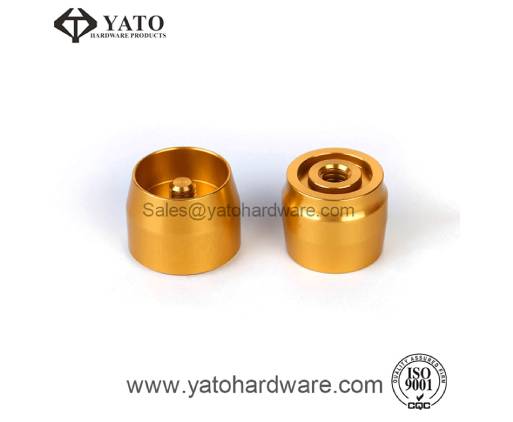CNC lathe has a wide range of processing performance, is a high-precision, high-efficiency automated machine tool. Equipped with multi-station turret or power turret. It can process straight-line cylinders, diagonal cylinders, arcs, and various complex workpieces such as various threads, grooves, and worms. The Aluminium Innovative Connectors Manufacturer talks about the classification of CNC lathes, as follows:
According to the lathe spindle position classification.
(1) Vertical CNC lathe is simply referred to as CNC vertical lathe. Its lathe spindle is perpendicular to the horizontal plane, and a circular table with a large diameter is used to clamp the workpiece. This type of machine tool is mainly used to process large and complex parts with large radial dimensions and relatively small axial dimensions.
(2) Horizontal CNC lathes are divided into CNC horizontal rail horizontal lathes and CNC inclined rail horizontal lathes. Its inclined rail structure can make the lathe more rigid and easy to remove chips.
Classified by basic types of machined parts
(1) This type of chuck type CNC lathe does not have a tailstock and is suitable for turning discs (including short shafts). The clamping method is mostly electric or hydraulic control, and the chuck structure has adjustable jaws or non-quenched jaws (ie soft jaws).
(2) Centre-type CNC lathes avvvvvvvvvre equipped with ordinary tailstocks or CNC tailstocks, which are suitable for turning long parts and disc parts with a relatively small diameter.
Classified by number of tool holders
(1) Single-tool NC lathes are generally equipped with various forms of single-tool holders, such as four-station horizontal moving index tool holders or multi-station turret type automatic indexing tool holders.
(2) The double tool post configuration of the double tool post CNC lathe is distributed in parallel or perpendicular to each other.

Machined Electronic Components with Gold Anodized
Categorized by the function of the CNC system
(1) The economical CNC lathe adopts a stepping motor and a single-chip microcomputer to transform the feed system of the ordinary lathe. The simple CNC lathe has a lower cost, but the degree of automation and functions are relatively poor, and the turning precision is not high. It is suitable for turning to the machine of less demanding rotary parts.
(2) The ordinary CNC lathe is specially designed on the structure according to the processing requirements of CNC Zinc Plating Turning Iron Part and is equipped with a universal CNC system. The CNC lathe has strong functions, high automation and high processing accuracy, and is suitable for general turning. Turning of parts. This CNC lathe can simultaneously control two coordinate axes, namely X axis and Z axis.
(3) CNC Turning Iron machining centre adds C axis and powerhead on the basis of ordinary CNC lathe. More advanced CNC lathe with tool magazine can control three coordinate axes X, Z and C, linkage control axis It can be (X, Z), (X, C) or (Z, C). Due to the addition of C-axis and milling powerhead, the machining the function of this CNC lathe is greatly enhanced. In addition to general turning, it can perform radial and axial milling, curved surface milling, holes and radial holes whose centerline is not at the centre of rotation Drilling and other processing.
Other classification methods
According to the different control methods of the CNC system and other indicators, CNC lathes can be divided into many types, such as linear control CNC lathes, two spindle control CNC lathes, etc .; according to special or special process performance can be divided into thread CNC lathes, piston CNC lathes, crankshaft CNC lathe And so on.